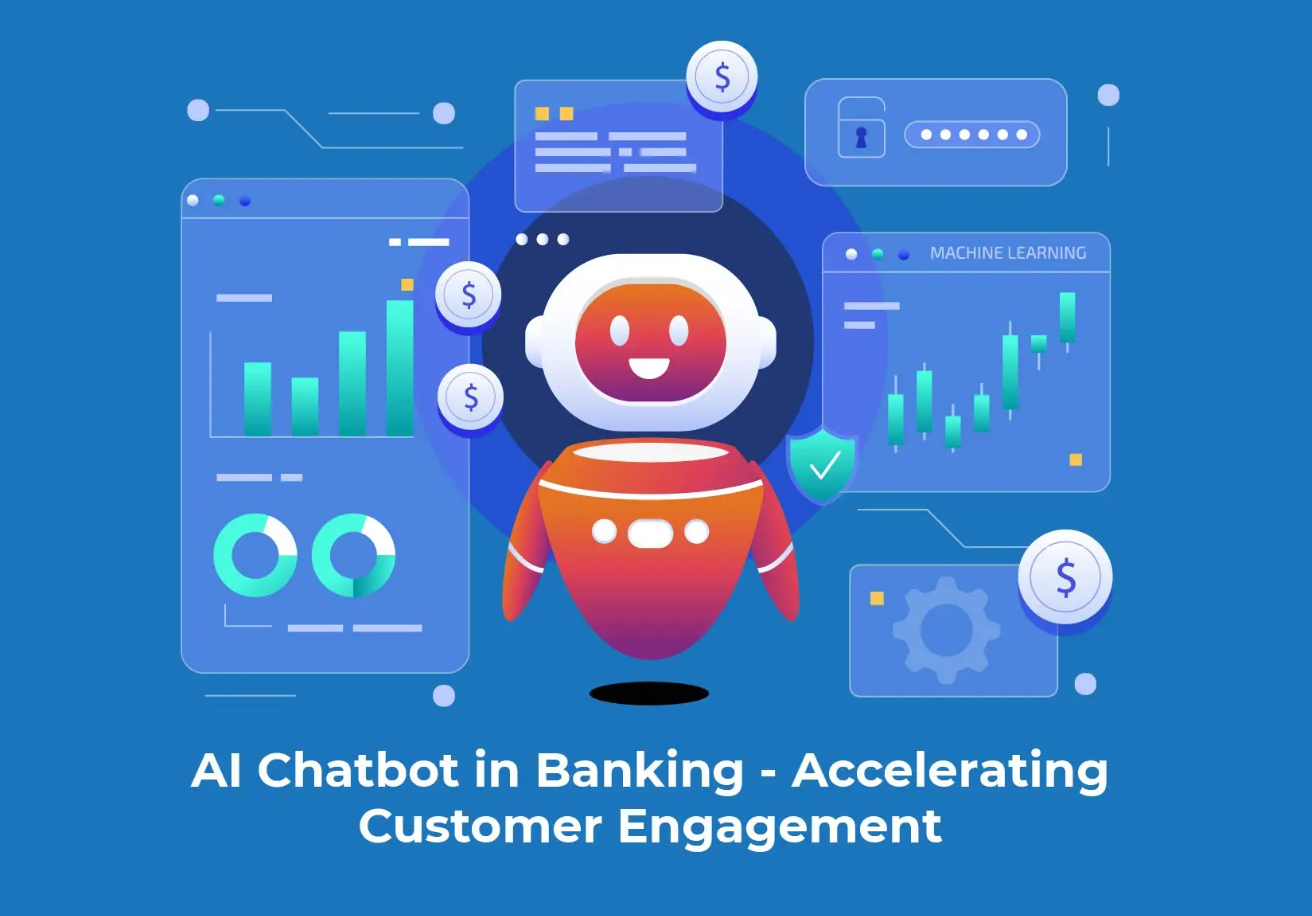AI-Powered Customer Experience in Banking: Utilizing Conversational AI and NLP to Personalize Digital Finance Services and Enhance Client Engagement
 Srinivasarao Paleti
Srinivasarao Paleti
Abstract
The rapid adoption of artificial intelligence (AI) in banking is transforming customer interactions through Conversational AI and Natural Language Processing (NLP). Banks are leveraging AI-powered chatbots, virtual assistants, and voice recognition technologies to offer personalized financial services, enhance client engagement, and improve operational efficiency. This paper explores how Conversational AI and NLP are revolutionizing the banking sector by personalizing customer experiences, improving customer support, and driving financial inclusion, while also discussing challenges such as data security, regulatory compliance, and AI bias.
1. Introduction
In the digital era, customers expect instant, personalized, and seamless banking experiences. Traditional banking systems often fall short in meeting these expectations due to long wait times, inefficient support systems, and a lack of personalized financial guidance.
The integration of Conversational AI and NLP in digital banking enables institutions to offer real-time, AI-driven interactions that understand, process, and respond to customer inquiries in natural language. AI-powered solutions enhance:
Customer engagement through intelligent virtual assistants.
Personalized financial recommendations based on transaction history and behavior.
Operational efficiency by reducing workload on human agents.
This research highlights how AI is redefining customer experience in banking by making interactions faster, smarter, and more intuitive.
2. Conversational AI and NLP in Digital Banking
Conversational AI uses NLP, machine learning (ML), and speech recognition to enable human-like interactions between customers and banking systems. Banks are deploying AI-powered chatbots, voice assistants, and automated messaging platforms to enhance customer experience.
2.1 AI Chatbots and Virtual Assistants
Banks are increasingly using AI-driven chatbots and virtual assistants to handle common customer queries and automate banking operations.
Automated Customer Support: AI chatbots can resolve frequently asked questions, such as account balances, transaction history, and loan applications, reducing the need for human intervention.
Personalized Banking Assistance: AI analyzes past transactions to offer tailored financial advice, such as budgeting tips, investment recommendations, and credit score monitoring.
24/7 Availability: Unlike human agents, AI-powered chatbots are available round-the-clock, ensuring uninterrupted customer service.
2.2 Voice Banking and AI-Powered Speech Recognition
Voice assistants like Amazon Alexa, Google Assistant, and Apple Siri are being integrated into banking platforms to offer voice-enabled banking services. AI-powered voice banking allows customers to:
Check account balances and recent transactions using voice commands.
Authorize payments and fund transfers securely through voice recognition.
Get personalized financial insights based on spoken queries.
For example, Bank of America’s Erica and Capital One’s Eno are AI-driven virtual assistants that provide real-time financial insights and proactive alerts to users.
3. Enhancing Customer Engagement with AI-Powered Personalization
3.1 AI-Driven Personal Finance Management (PFM)
AI-powered banking applications analyze user spending habits and provide:
Personalized savings recommendations based on transaction patterns.
Smart budgeting tools that automatically categorize expenses.
Predictive financial alerts to prevent overdrafts or missed payments.
For instance, Wells Fargo and Citibank use AI to offer real-time spending insights and tailored financial advice based on customers' transaction history.
3.2 Sentiment Analysis for Customer Feedback
NLP-powered sentiment analysis enables banks to:
Analyze customer feedback from emails, chats, and social media.
Identify pain points and areas for service improvement.
Personalize responses to enhance customer satisfaction.
By understanding customer sentiment, banks can proactively address issues, improve services, and build stronger relationships with clients.
3.3 Fraud Detection and AI-Driven Security
Conversational AI also improves security through fraud detection and identity verification:
Biometric voice authentication prevents fraud by verifying a customer’s voiceprint.
AI-powered anomaly detection flags suspicious transactions in real time.
Multi-factor authentication (MFA) enhances digital banking security.
For example, HSBC and Barclays use voice biometrics to authenticate customers securely, reducing fraud risks while enhancing user experience.
4. Challenges in AI-Powered Banking
4.1 Data Privacy and Security Risks
Conversational AI systems handle sensitive customer data, raising concerns about:
Data breaches and cyber threats.
Misuse of personal financial information.
Compliance with data protection laws like GDPR and CCPA.
To address these challenges, banks are implementing secure AI models, encryption, and ethical AI governance frameworks.
4.2 Regulatory and Compliance Challenges
AI-driven financial services must adhere to strict banking regulations and compliance requirements. Regulatory bodies such as the Federal Reserve, European Central Bank (ECB), and Financial Conduct Authority (FCA) mandate transparency and AI explainability in banking operations.
4.3 AI Bias and Fairness Issues
AI models can inherit biases from training data, leading to discriminatory lending or biased customer interactions. To mitigate bias:
AI models must be regularly audited for fairness.
Explainable AI (XAI) should be used to justify financial recommendations.
Diverse training datasets should be used to ensure unbiased AI decisions.
5. Future of AI in Digital Banking
The future of Conversational AI and NLP in banking will focus on:
Hyper-personalization: AI will deliver ultra-customized financial advice based on real-time behavioral analysis.
Multilingual AI Assistants: Banks will integrate NLP-powered chatbots capable of supporting multiple languages to expand global accessibility.
AI-Powered Financial Coaching: Conversational AI will act as a virtual financial coach, helping customers manage investments, loans, and savings proactively.
Voice-Enabled Biometric Security: Banks will enhance voice-based authentication to improve transaction security and fraud detection.
With advancements in AI, big data analytics, and cloud computing, AI-powered banking experiences will become more intuitive, secure, and efficient.
6. Conclusion
AI-powered Conversational AI and NLP are revolutionizing digital banking by offering personalized, real-time, and interactive financial experiences. AI-driven chatbots, virtual assistants, and voice banking solutions enhance customer engagement by:
Providing instant financial assistance.
Automating customer support and reducing response times.
Offering hyper-personalized financial insights.
However, challenges such as data privacy, regulatory compliance, and AI bias must be addressed to ensure ethical and secure AI adoption in banking.
As AI technology continues to evolve, Conversational AI will become an essential tool for banks to build stronger customer relationships, enhance trust, and drive financial innovation.
Subscribe to my newsletter
Read articles from Srinivasarao Paleti directly inside your inbox. Subscribe to the newsletter, and don't miss out.
Written by
